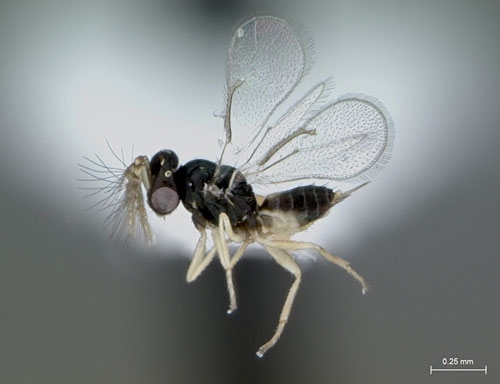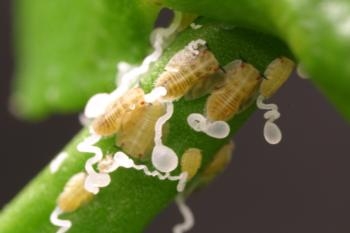Posts Tagged: huanglongbing disease
Parasitic wasps battle Asian citrus psyllid
Western Farm Press ran a detailed update on efforts at UC Riverside to identify and release natural enemies of Asian citrus psyllid to aid in the fight against the feared citrus pest and the deadly citrus disease huanglongbing it carries in other parts of the U.S. and world.
To date more than 160,000 parasitic wasps have been released in over 400 locations spanning 350 zip codes, 64 cities and six counties in southern California, the story said. The counties are Los Angeles, Orange, San Bernardino, Riverside, San Diego and Imperial.
“What was remarkable was we had put out few parasites in relatively few areas (and) they survived just fine,” Hoddle said. “They came through their first winter here in southern California with no problem. That is always the first test: can they survive their first winter?”
Hoddle told Fitchette he is encouraged by the success of the program and by the biological success of the wasp. Since it was first released, it has developed its own breeding populations and has been discovered as far as eight miles away from initial release sites, indicating that it is quite mobile.
Hoddle cautions that the Tamarixia, and another parasitoid called Diaphorencyrtus aligarhensis (Encyrtidae), which could be released in California later this year, are not “silver bullets” in the Asian citrus psyllid/huanglongbing fight. Nevertheless, they do offer hope.
Commercial orchards will continue to spray for the ACP, but urban environments can employ biological control measures when the spray program operated by the state is too expensive to continue.
“As long as we maintain well-irrigated urban environments with plenty of citrus in them the Asian citrus psyllid is going to be here to stay,” he said.
San Diego County neighborhoods to be treated for Asian citrus psyllid
State officials will spray pesticide on residential citrus trees near Fallbrook today (Dec. 17), part of an ongoing effort across Southern California to prevent a devastating citrus disease, reported the San Diego Union Tribune.The pesticide application targets Asian citrus psyllid, which can transmit huanglongbing disease.
Residents in the area have been notified, said Steve Lyle, spokesman for the California Department of Food and Agriculture. He said officials have used the same preventive approach in San Diego County since 2008, when the pest was first discovered locally.
Union Tribune reporter Chris Nichols added information in the article from UC's Asian citrus psyllid and huanglongbing disease website.
"The Asian citrus psyllid is a brown insect about the size of an aphid. It attacks new citrus leaf growth and causes the new leaf tips to twist or burn back. Most concerning, it can spread bacteria that cause a citrus-greening disease known as Huanglongbing or HLB, according to a description on the University of California’s Agriculture and Natural Resources website," the reporter wrote.


